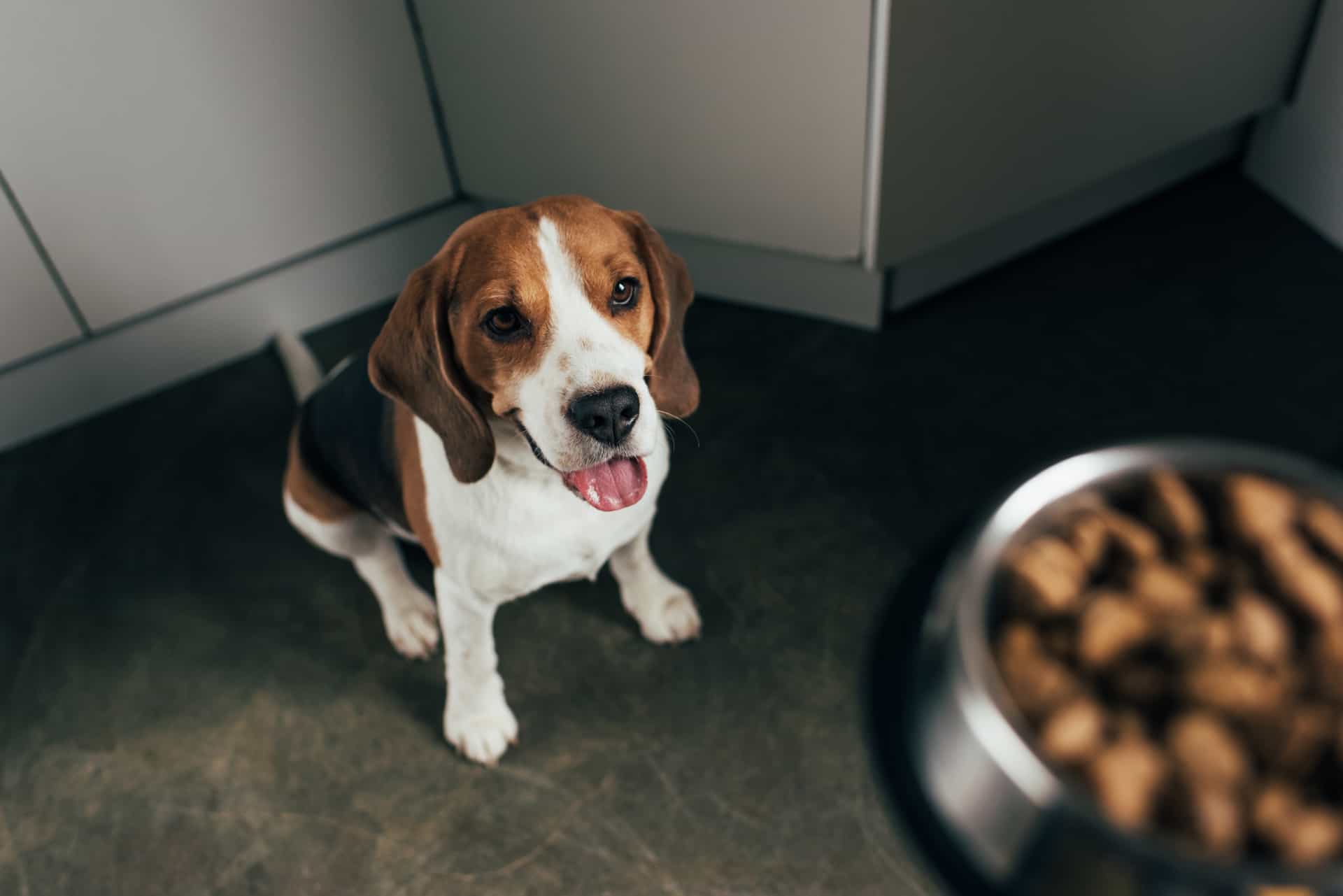Understanding your dog’s Nutritional Requirements
Dog owners – get to know your pup’s nutritional needs! Age and health-related requirements vary. Different breeds have diverse dietary needs. Protein, vitamins, minerals and other nutrients all must be met. To keep your pup healthy, it is essential to understand their changing needs.
The Six Nutritional Components Essential for your Dog’s Health
Ensuring optimal health for your furry friends is key. For this, feed them a well-balanced diet with six essential nutrition components:
- Water: Vital for digestion, nutrient absorption and temperature regulation.
- Protein: Meat, poultry and fish for healthy muscles, organs and tissues.
- Carbohydrates: Whole grains, fruits and vegetables for energy and digestion.
- Fats: Fish oils, flaxseed and chicken fat for cell function, organ cushioning and healthy skin and fur.
- Vitamins: Essential for various processes, such as immune function.
- Minerals: Calcium, potassium and iron for strong bones, fluid balance and immune function.
Providing balanced meals with the correct ratios of these components will ensure optimal health and longevity for your four-legged friend.
How the Dog’s Life Stage Affects Nutritional Requirements
A dog’s life stage affects its nutritional needs. As a canine owner or caretaker, it’s important to understand these needs for optimal nutrition.
- Puppies need more energy and protein for growth.
- Adult dogs need to maintain their body condition and health with a balanced diet.
- Senior dogs require fewer calories, but high-quality proteins and other nutrients are still important.
Breed, size, and lifestyle affect nutritional needs too. Feed adult dogs a balanced diet of protein, carbs, fats, and vitamins/minerals.
Pro Tip: Talk to your vet to determine your dog’s exact nutritional needs based on their life stage and health.
How to Determine the Appropriate Caloric Intake for Your Dog
To find the right caloric intake for your pup, you must understand their dietary needs, lifestyle, and body condition. Here’s how to get started:
- Calc the Resting Energy Requirement (RER), based on weight and lifestyle. That is the number of calories your pup needs to stay alive at rest.
- Adjust the RER based on your pup’s activity, age, and temperament.
- Check their body condition score to know if to increase or decrease their caloric intake. A pup with a healthy body condition score has a waist that’s easily visible and their ribs can be felt.
- Consult your vet for the ideal caloric intake for your pup. Especially if they have special dietary needs or health issues. Your vet will help you pick the right food to keep your pup healthy and nourished.
Choosing the Right Food for Your Adult Dog
Finding food for your adult pup? It’s key! The right food choice can nurture their health and nutrition needs. But with so many choices, how do you know which is best?
Here’s the scoop on picking food for your adult dog: take these tips into consideration:
Deciding Between Dry, Semi-Moist and Wet Dog Food
Deciding which food is right for your adult pup? You need to think about their lifestyle, health, and needs. Three main types of dog food: dry, semi-moist and wet.
Dry food is most popular. It’s affordable and comes in a range of flavors and formulations. Dry food helps keep teeth healthy and can help dogs who need to lose weight or have digestion issues.
Semi-moist food contains more water than dry food. It’s portioned, but contains more sugar and salt than other options. Not a good choice for certain health concerns.
Wet food has the most moisture. Great for dogs that need more hydration or have trouble chewing. Usually pricier and with a shorter shelf life.
Tip: Get advice from your vet before making a food decision. Make sure it meets your pup’s nutritional and health needs.
Evaluating the Ingredients List and Its Importance
Choosing food for your adult dog? Essential to have a nutritionally balanced and healthy diet. Here’s why:
- The ingredients list on pet food labels shows the type, quality and quantity of ingredients used. Read the list to check if the food has high-quality protein sources, grains and vegetables. Also look out for allergens or harmful additives.
- To get the best nutrition for your dog, choose high-quality food with meat as the first ingredient, then vegetables and grains. Avoid artificial colors, preservatives and flavors, as these can be bad for your dog’s health.
- Also, talk to your veterinarian for personalized advice based on your dog’s breed, age and health conditions for the best care.
Understanding Commercial Dog Food Labels and Their Contents
It’s essential to comprehend commercial dog food labels to pick the correct food for your adult canine and guarantee ideal nutrition. Here’s how to decode dog food labels:
Ingredient List: Ingredients are listed by weight in descending order. Choose a food with a top-quality animal protein, like chicken or lamb, as the first ingredient. Dodge foods with fillers such as corn, soy, and wheat.
Guaranteed Analysis: This segment records the nutrient content of the food, including protein, fat, fiber and moisture. Ensure the protein and fat levels are ideal for your pup’s age and activity level.
AAFCO Statement: The Association of American Feed Control Officials set standards for pet food. Search for dog food that fulfills AAFCO rules for a “complete and balanced” diet.
Feeding Instructions: Follow the suggested feeding guidelines on the label depending on your dog’s age and weight. Abstain from overfeeding your pup to stay away from heftiness and other health issues.
By remembering these variables, you can choose the ideal commercial dog food to meet your pet’s dietary needs.
Feeding Schedule and Portions for your Dog
Feeding your pup is key to their health and joy! Plus, it helps them stay at their perfect weight. It’s necessary to give them the correct quantity of food at a regular interval, to guarantee they get proper nutrition. In this guide, we’ll talk about an adult dog’s feeding plan and portions.
Choosing a Feeding Schedule Appropriate for your Lifestyle
Finding a feeding schedule that works for you is important for your adult dog’s nutrition. Amount and frequency of meals depend on age, breed, size, activity level, and medical conditions. Here are some guidelines:
- Puppies 6-12 weeks: 3-4 meals/day.
- Puppies 3-6 months: 3 meals/day.
- Puppies 6-12 months: 2 meals/day.
- Adults 1-6 years: 2 meals/day.
- Seniors 7+ years: 1-2 meals/day.
Stick to a regular schedule for their digestive system. Measure portions for proper nutrition. Seek vet advice for a personalized plan. Tip: Consistency is vital. Stick to a schedule to help them stay healthy and reduce the risk of digestion issues.
Portions Sizes Based on your Dog’s Size, Weight, and Activity Level
It’s key to feed your dog based on their size, weight, and activity level for their health and wellbeing. Here’s a guide to assist in this:
- Small breeds (<20 lbs) may need 1/4-1 cup/day, depending on activity.
- Medium breeds (20-50 lbs) may need 1-2 cups/day, depending on activity.
- Large breeds (50-100 lbs) may need 2-4 cups/day, depending on activity.
- Giant breeds (>100 lbs) may need 4-8 cups/day, depending on activity.
These are just general guidelines, your dog’s needs may differ. Chat with your vet to figure out the best feeding schedule and portion sizes for your pup based on their particular needs.
Dog Obesity: Causes, Consequences, and How to Prevent It
About 56% of pooches in the US are overweight or obese, making dog obesity a common issue. Causes include overfeeding, feeding table scraps and junk food, and an inactive lifestyle. The consequences can be severe – heart disease, arthritis, diabetes, and even a decrease in lifespan.
To prevent obesity, feed them high-quality dog food suitable for their age, breed, and weight. Measure out portions and create a regular feeding schedule to regulate metabolism. Plus, make sure to give them exercise or playtime every day. Every pup is different, so consult a vet for a customized feeding and exercise plan that meets their individual needs.
Supplements and Treats for your Dog
Balancing a pup’s diet is important for their health. Supplements and treats are needed in different stages of life. Supplements provide vitamins, minerals, and other nutrients to support overall health. Treats are a convenient reward and can provide extra nutrition. In this section, let’s explore the types of supplements and treats that suit an adult dog.
The Role of Supplements in your Dog’s Diet and Health
Supplements are vital for keeping your furry friend healthy. Quality dog food provides a balanced diet, but supplements can fill nutrient gaps, support coat health, and aid overall wellbeing – especially for senior dogs. Here are some key supplements to consider:
- Omega-3 Fatty Acids: These promote a glossy coat, help with arthritis pain and reduce inflammation.
- Probiotics: They help digestion and boost immunity by restoring gut flora.
- Glucosamine: This supports joint health and eases inflammation in dogs with arthritis.
- Multivitamins: A dog multivitamin ensures they’re getting the essential vitamins and minerals.
Always consult a vet before adding anything new to your dog’s diet.
Nutritional Benefits of Dog Toys and Treats
Dog toys & treats offer more than just fun for your pup. They can provide nutritional benefits too! Here are some of them:
- Dental hygiene: Chews & bones help stop plaque & gum disease.
- Joint health: Anti-inflammatory ingredients can help joint mobility & ease pain.
- Skin & coat: Essential fatty acids & vitamins keep fur soft & shiny.
- Mental stimulation: Interactive toys help brain development.
Though treats & supplements are great, don’t forget to consult your veterinarian for a balanced diet!
Foods Your Dog Shouldn’t Consume and Why
It’s vital for dog owners to recognize which human foods can harm their pet’s health. These foods can cause tummy issues, toxicity, or more serious complications. Here is a list of human foods to avoid with your pup and why:
- Chocolate: This contains theobromine, which is dangerous for dogs. It can lead to vomiting, the runs, seizures, and heart problems.
- Grapes and raisins: Shockingly, these fruits can result in sudden kidney failure for dogs, causing dehydration and other health issues.
- Onions and garlic: Both contain a substance called thiosulfate, which damages red blood cells in canines, potentially causing anemia.
- Avocado: It carries persin, which can make dogs vomit and have the runs, plus potential heart and respiratory problems.
- Alcohol: Even tiny amounts are toxic for dogs, resulting in dizziness, vomiting, and lack of coordination.
Pro Tip: To ensure the best nutrition and health for your pup, always check with your vet before feeding them something new.
Special Considerations for Feeding your Adult Dog
Adult dogs need more protein, fats and other important nutrients to be healthy. It’s important to give them a balanced diet that meets their needs. Let’s talk about special things to consider when feeding adult dogs. This includes things like activity, age, and health problems. We’ll also look at the advantages and disadvantages of different types of food, and which type of food is best for your adult dog.
Feeding Dogs with Allergies or Sensitive Stomachs
Feeding dogs with allergies or sensitive tummies needs special thought. Here are some tips to help:
- Check the ingredients of the dog food. Pick a brand free of soy, wheat, corn, and dairy.
- Choose a novel protein source like fish or lamb. Avoid allergens.
- Offer small amounts often. Not one or two big meals.
- For severe allergies or digestion issues, make food at home or feed a raw diet.
- Consult a vet before changing the diet. They can suggest a plan based on age, weight, and health.
Restoring Health with Good Nutrition after Illness or Surgery
Healing after sickness or surgery needs an understanding of good nutrition and its part in the healing process. Although many things contribute to a full recovery, proper nutrition is essential.
Here are some tips to ensure proper nutrition for your doggy:
- Choose a high-quality dog food that matches your pup’s nutritional demands. Consider their breed, activity level, health status and life stage.
- Feed your doggy at the same time and place every day to form a routine.
- Check their weight and body condition to make sure they maintain a healthy body condition score.
- Give treats and table scraps in small amounts and dodge foods that are poisonous to dogs.
Pro tip: Get advice from a vet or canine nutritionist to make a personalized feeding plan for your adult pup that backs up their wellness and health.
The Importance of Feeding Senior Dogs Appropriately for Aging and Health Maintenance.
As our furry friends age, feeding them properly is essential for their health and happiness. Consider these tips when feeding senior dogs:
- Look for dog food with fewer calories and fat to meet their needs.
- Include omega-3 fatty acids to help with skin, coat, and cognitive function.
- Split meals into small portions throughout the day.
- Account for dental issues by serving moist or soft food.
- Make sure they always have access to fresh water.
A nutritious diet is key to a happy senior pup!
Frequently Asked Questions
1. What should I feed my adult dog?
A: Ideally, your adult dog should be fed a balanced diet that consists of high-quality protein, carbohydrates, healthy fats, vitamins, and minerals. You can choose between commercial dog food, home-cooked meals, or a combination of both.
2. How often should I feed my adult dog?
A: The frequency of feeding your adult dog should depend on their age, health, and activity level. In general, most adult dogs do well with two meals a day. However, some dogs may do better with one large meal or several small meals throughout the day.
3. Can I give my adult dog human food?
A: Some human food can be safe and healthy for dogs in moderation, but others can be toxic or harmful. It’s best to consult with your veterinarian before giving your adult dog human food to ensure that it’s safe and won’t cause any health issues to your pet.
4. Do I need to supplement my adult dog’s diet?
A: Most commercial dog food provides all the necessary nutrients that your adult dog needs. However, if you’re feeding your dog a home-cooked diet, you may need to supplement their diet with vitamins and minerals to make sure that they’re getting everything they need to stay healthy and thrive.
5. How much should I feed my adult dog?
A: The amount of food your adult dog needs depends on their age, weight, and activity level. Generally, most adult dogs need around 1-2 cups of food per day, but some may need more or less. It’s best to consult with your veterinarian to determine the right amount of food for your dog.
6. How can I tell if my adult dog is overweight?
A: Some signs that your adult dog may be overweight include having a rounder belly, difficulty breathing or walking, being less active, and having trouble getting up. You can consult with your veterinarian to determine whether your adult dog is at a healthy weight and to develop a plan to help your pet lose weight if necessary.







